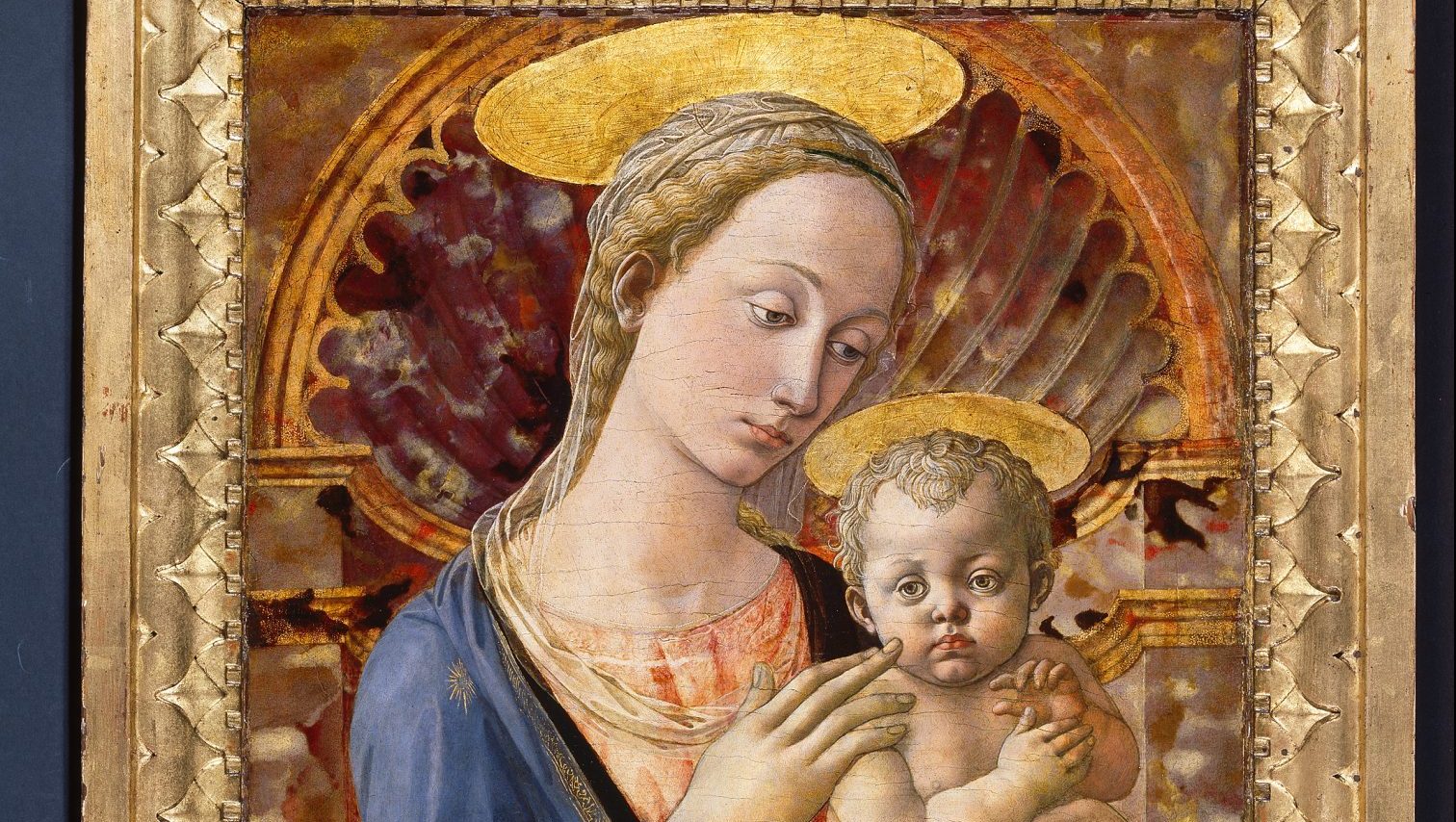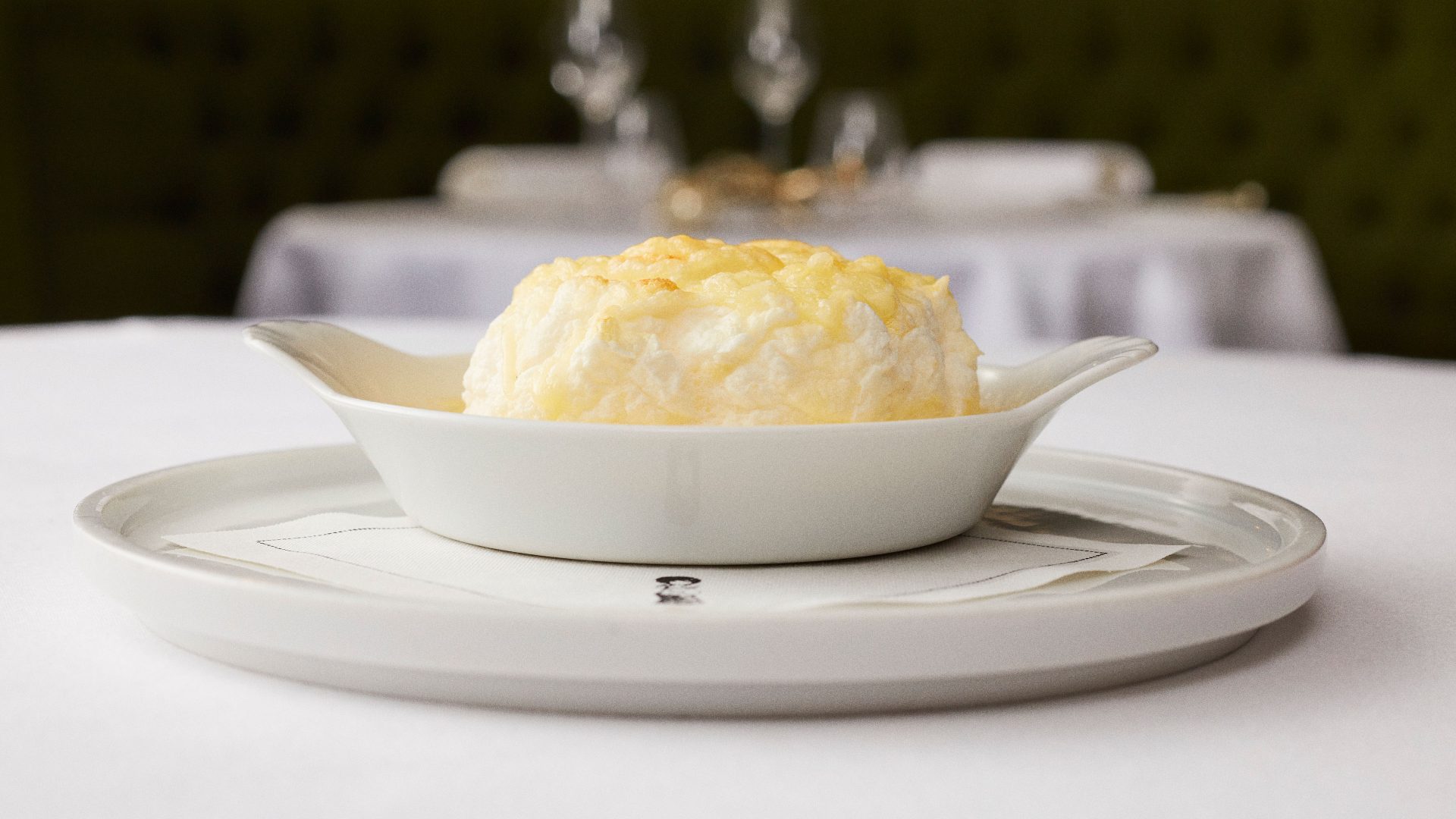At first glance, it seems like a peculiar scene with which to mark an important marriage. Without armour, an adolescent David has already bloodied the towering Goliath with a stone from his sling, and because time is not linear in this narrative painting, the giant is also already dead and beheaded at the boy’s feet. All around, other skirmishes rage, while the livestock that David was tending graze on and a pride of lions watch from the sidelines.
The Story of David and Goliath and The Triumph of David are the work of Francesco di Stefano, dubbed Pesellino, an Italian artist of the early 15th century who is almost unknown, since so few works survive from his short but significant life and rapid career. And while the slaying of Goliath is a complex scene, even more lavish is the rejoicing that follows, which chimes more naturally with the idea of marital union.

Down the hillside wind richly attired noblemen on their decorated horses, more and more detail emerging as they come closer into view for a triumphant march-past. Now it is not lions, but the ladies of the court who observe, themselves luxuriously dressed, and with two younger girls, possibly about the same age as David, joining the elegant womenfolk.
Pesellino was the son and grandson of established artists. His father died when he was five, and his mother brought up her children in her father’s home. Giuliano d’Arrigo di Gioccolo Giochi was known as Pesello – or “pea”, an infelicitous reference to male genitalia. The boy learned at his grandfather’s knee, and found himself with an entree to the important Medici court through Pesello’s work.
Other connections are known: he was acquainted with and may have had some training from Andrea del Castagno. From an early age he worked alongside the prolific and sought-after Fra Lippi, who would outlive him and complete his unfinished work when the devastating plague of 1457 claimed the life of the younger man, at the age of only 35.
His short life, several collaborations, and the practice of other artists of copying Pesellino’s compositions, notably a now familiar and exceptionally graceful Virgin and Child scene, have made attribution difficult. But modern technology sheds new light all the time. Some work is known of but lost. There are more or less 20 of his identified works in the world. Eight of these are on display at the National Gallery, in the first-ever exhibition devoted to the artist.
The David panels (1452-55) are among them, purchased by the gallery in 2000 after many years on long loan, and now restored to the magnificence that would almost certainly have graced a chamber in a Medici palace. There was already a tradition of wedding chests – cassoni – portraying struggles and victory, with allusions to the winning of a fair hand. The triumphal side was a trigger for the display of splendour, like a permanent wedding reception, and the Medici were always happy to see depictions of wealth and power that echoed their own. This chest may have furnished the palatial apartments of Piero de’ Medici and his wife Lucrezia, passing to their daughter Nannina upon her marriage in 1466.
Did Pesello take his seven-year-old grandson into central Florence in 1429? It’s the sort of thing a boy would remember, especially one with a good eye. A stupendous cavalcade was staged with, recorded a contemporary commentator, an impressively upright real-live David tall and steady on a moving cart.
The spectacular procession would be repeated at five-year intervals, as the Medici took over a religious body of lay people, the confraternity of the Magi. The Magi might arrive as three men with a few hangers-on in the view of some artists, but in Florence they arrived in style. Gentile da Fabriano’s Magi arrive with such numbers that they burst out of the picture (and on to the mantelpiece of many a home at this time of year).
At the Palazzo Medici Riccardi, Benozzo Gozzoli’s Magi zigzag with scores of followers down a rocky hillside; Pesellino’s similarly composed triumphal parade pre-dates it by a few years.
During restoration, modern techniques have thrown up new information about Pesellino’s cassone. The discovery of tiny pieces of wood inserted at a later date than the original support indicates that the panels, sometimes thought to have been displayed on the wall at shoulder height, are indeed the sides of a wooden chest. The inserts fill the former keyholes, and there are signs of wear in the area where dangling keys would have brushed across the paintwork.
Pesellino is known to have been a highly skilled draughtsman – disegno being a point of pride in Florence. The drawing of a single figure on display at the National Gallery illustrates Pesellino’s gossamer-light touch and microscopic detail. Impeccable, intricate drawings underlie the colourful finished article, painted on poplar, and important features are marked in with solid black strokes or fine, repeated lines.
First came a coating of gesso, then the meticulous drawing, then clay-like red bole on the sites where the gold and silver leaf used extensively were to be applied. Today, conservators can see through the many layers, and detect gold leaf under paint and peeping through the edge of painted areas. The gold and silver leaf was also stippled and burnished, the better to catch the light and suggest the opulence of court attire.
Despite the complexity and detail of the underdrawings, the occasional change of mind can be observed, notably in the headgear of a woman of the court, thought by some to represent a bride, but also as likely to be a noble onlooker. While the eye-catching peacock headdress of her companion might appeal to the modern eye, the woman alongside in faded red has been given an upgrade by Pesellino. Her once more modest cap has been raised into a higher, more extravagant saddle shape, known as a sella, and as such worn only by a woman of the very highest status, possibly because she could defy dress-restricting sumptuary laws without fear of censure.
Nothing Pesellino did was left to chance. The central figure in the David panel is made to appear somewhat like a unicorn, as his rider’s lance is angled straight past the animal’s attentive features.
The unicorn represents a range of desirable virtues or roles, including chastity and royalty. Nearly every one of the many creatures in the busy scenes is displaying his male attributes. Possibly only the slinky foreground cheetah is female, but who knows the sex of the jaunty baby bear? This delightful skill for animal painting was one of Pesellino’s calling cards. There are at least 78 horses in the two panels of the cassone, and if an array of legs unaccounted for are added in, maybe as many as 90.
David’s victory over Goliath has been an easy one. He has eschewed the cumbersome armour that Saul’s other warriors favour, and set to work in a decorative pink smock, displaying well-toned legs. He gathered pebbles for his sling from the river that meanders through the entire scene, and has ammunition to spare when the giant is felled.
The Medici, Florence’s ruling elite, would surely have admired such refinement – and the suggestion of power without effort.
Pesellino: A Renaissance Master Revealed is at the National Gallery, London, until March 10




